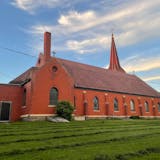“Woodpecker,” we think, when we see a black and white bird at our feeder or on a tree trunk, lumping members of a diverse family together. But which one is it?
Woodpeckers deserve a second look, because there’s more to these interesting birds than initially meets the eye. For one thing, they show a great deal of variation in size, with tiny downy woodpeckers dwarfed by the other species, especially their big cousins, the pileateds. We associate woodpeckers with trees, but one, the Northern flicker, really prefers to forage on the ground, for ants and other insects.
Most do spend the bulk of their time in trees, but use different pecking styles to forage, dictated by the size of their beaks, from the small pick of a downy to the massive chisel of a pileated.
Even in winter, this family of birds is mainly focused on insects, which make up three-fourths of their diet. They hunt the trees in their territory over and over so assiduously that it’s a wonder there are any insects left to emerge in the spring. The small woodpeckers poke and peek into bark crevices, while the mid-sizers, the hairy and red-bellied, drill past the bark to find insect larvae. Pileateds use their large, powerful beaks to reveal galleries full of plump carpenter ants, leaving behind large holes.
Which brings us to a major question people often have about woodpeckers: Do they kill trees?
And the answer is no; woodpeckers rarely, if ever, do significant harm to healthy trees. If woodpeckers are chipping into a tree, it almost certainly is already diseased or damaged, which draws insects, which, in turn, attract the woodpeckers.
“Woodpeckers are part of the natural function of the forest and excavate cavities to extract insects in dead or dying trees,” says Lee Frelich, director of the University of Minnesota’s Center for Forest Ecology.
They also excavate holes in trees in springtime to hold their offspring, and then, when the youngsters fledge, the family leaves and the hole goes up for grabs. Any one of the many residents of the forest will then claim the space, from gray, red or flying squirrels to cavity-nesting birds like Eastern bluebirds, great-crested flycatchers, chickadees or small owls, like saw-whets or screeches.


